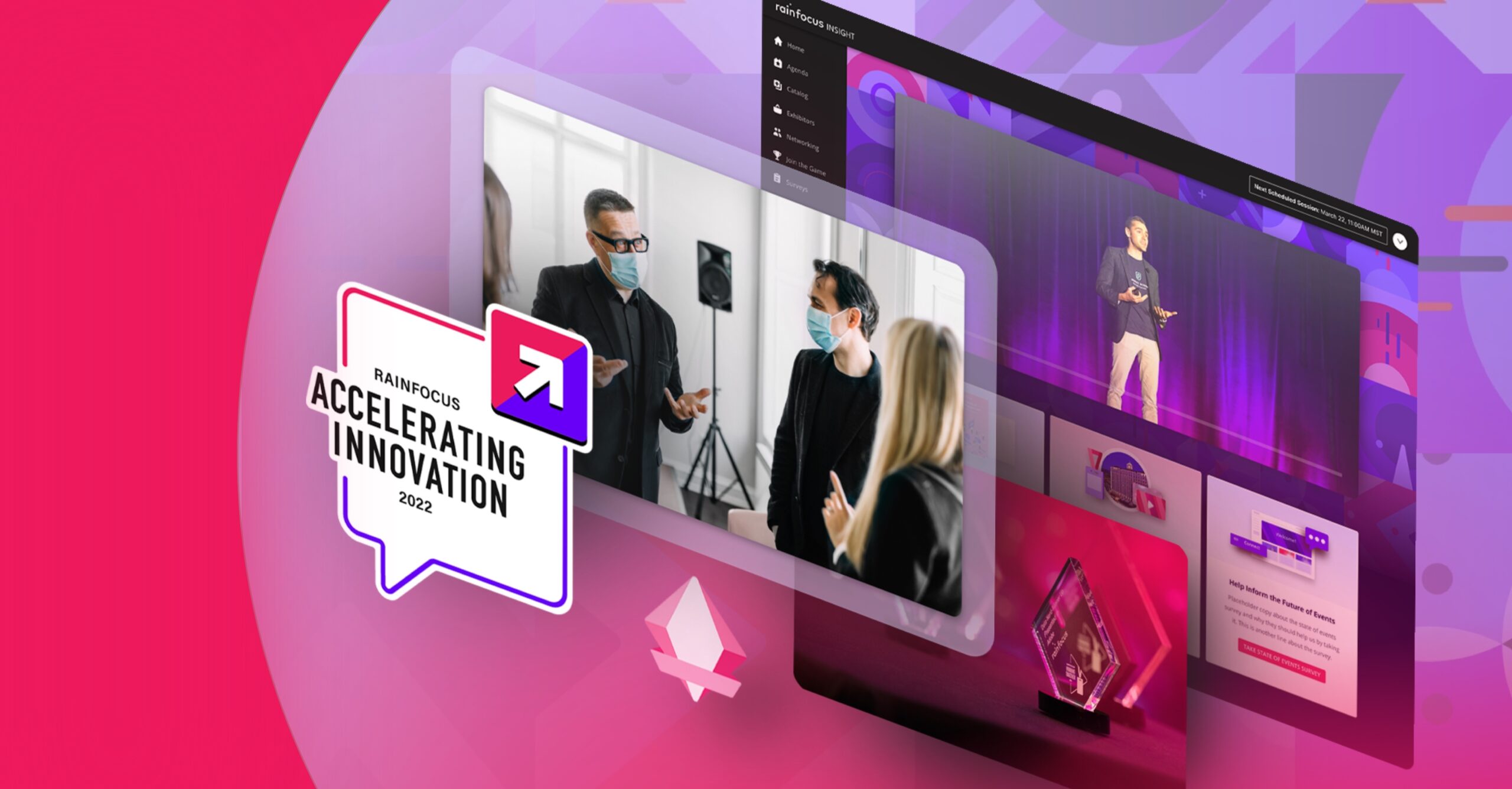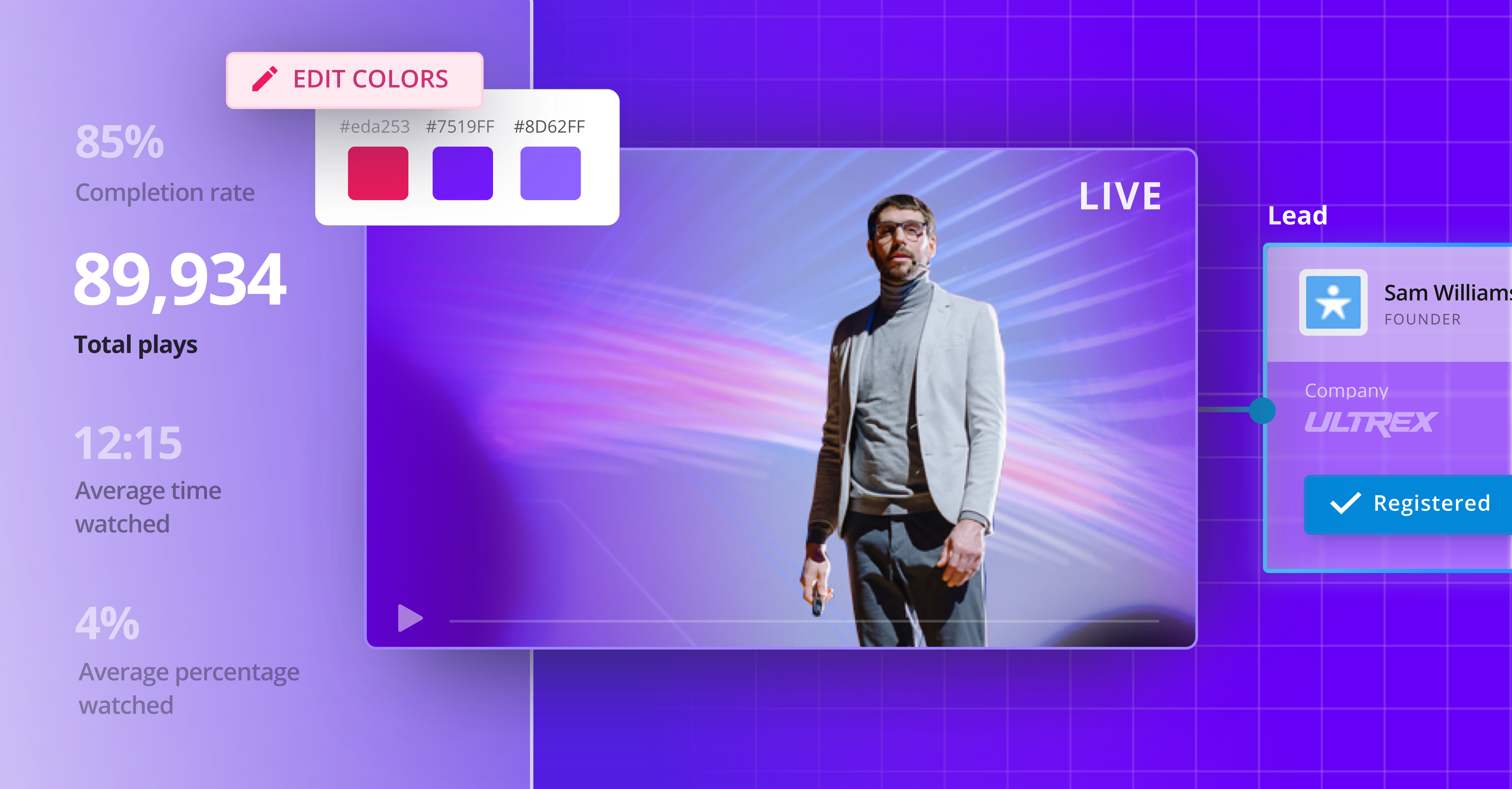RainFocus On Demand is an online event industry resource where insights and best practices are shared with site visitors who want to up-level their event experiences and achieve winning results. It offers a comprehensive library of content that is designed to build career skills, provide expert analysis of the latest industry trends, and help users increase their event success. We recently sat down with Rodney Hart, VP of events at RainFocus, to discuss some of the most important information about this exciting new learning portal.
To start, what is RainFocus On Demand? What can a first-time viewer expect to find on their screen when they first log in?
Hart: RainFocus On Demand is a free resource designed to help anyone who is involved with events and wants to be at the forefront of industry trends and innovation. When people log in, they’ll see presentations from INSIGHT packaged in a way that helps them discover sessions that they didn’t attend or that they likely want to rewatch. The full library is also available to people who haven’t participated in our events before. We plan to continually add new materials, including exclusive content that was not featured at any of our events.
How does this complement session attendance at INSIGHT? What are users who attended the event getting that’s different?
Hart: We created RainFocus On Demand especially for event industry leaders interested in lifelong learning who want a single resource that helps them navigate our ever-changing industry. It doesn’t just host sessions from our annual events but also features fresh new content posted regularly. Additionally, users are given personalized recommendations of sessions they may have missed during the live event.
Our plans also include hosting product webinars as well as producing other valuable resources. We’re making RainFocus On Demand a constantly evolving destination that learners can visit any time. They can come back to the library and reliably find new videos to watch as well as favorite items to watch later. Visitors will find everything from RainFocus platform instruction to guidance on important industry trends. This will ultimately be the go-to environment for all RainFocus-exclusive content.
What market trends did you and the team note that indicated the time was right for a resource library like this?
Hart: We definitely saw a need. Many virtual events remained “open” after their traditional event period and saw new registrations and re-watching afterward. Attendees who didn’t attend wanted to watch content and some who did attend wanted to view sessions they missed or re-watch their favorite sessions. These attendee trends pointed to the opportunity to promote content through new marketing channels to attract new audiences over the course of the year.
With so many digital-only events over the past couple of years, there has been so much great content produced — more than anyone could consume over the course of several hours or even a few days. This always-on and continuously updated experience allows people to consume information at their own pace and is designed to complement attendance at any of our in-person, virtual, or hybrid events.
RainFocus On Demand looks and feels like the personalized portals that we interact with in our everyday lives. There’s an expectation that the sites we visit will provide us with personalized recommendations like Netflix or Amazon. Just about every site we visit is individualized, so we brought that experience to RainFocus On Demand. Additionally, the overall layout is simple but powerfully intuitive.
In the current era of events, we are seeing many in-person gatherings return. How has that affected interest in digital content?
Hart: RainFocus On Demand definitely won’t replace attendance at in-person events. It’s an opportunity to package sessions that we know resonated especially well at our in-person and virtual events. Digital events and online viewing will play an important role across event portfolios. From economic and corporate social responsibility perspectives, there are enduring benefits to alternatives to gathering in person.
We’re seeing some audiences shift from virtual attendance to in-person attendance, but not everyone will make that move. Digital content helps you retain audiences. It’s a great way to attract, enrich, and convert audiences — which means it will always have a place to complement and accelerate relationships with your audiences.
Plus, a continuous learning hub is a way to find expertise in one location. Of course, at some organizations, a certain volume of digital event content will wane as in-person events return, but having an always-on library is still a powerful way to keep audiences engaged. Whether it’s customers or prospects visiting the library, it can deliver value to people who otherwise would not have seen it.
Finally, what’s in the plans as RainFocus On Demand grows?
Hart: We’ll continue to improve upon the user experience by providing greater personalization, more exclusive content, and continuing education credits. Value always comes from great learning that helps build event leaders’ knowledge and improve their performance in their respective roles.
Overall, the industry is moving away from hosting a “disposable” event and providing content that exists only at a single point in time. Through a personalized, continuous learning hub like this, the value of the content is increased for both creators and viewers.
The debut of RainFocus On Demand is only the beginning. We are excited to launch this new resource and continue expanding the library of available content. We want to inspire innovation and enable you to think through the challenges of event marketing and management — any time, anywhere.








